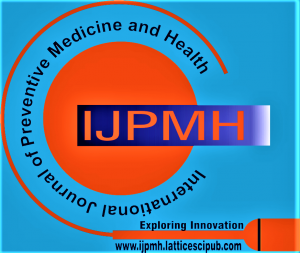![]()
A Comprehensive Review of the Hierarchy of Controls and Barriers to its Implementation
Joshua A. Jogie1, Donna Rampersad2, Deva Bharrath-Singh3, Shivrad Joseph4, Aleshia Clarke5, Tounesha La Rosa6
1Dr. Joshua A. Jogie, Faculty of Medical Sciences, The University of the West Indies, St. Augustine, Trinidad and Tobago.
2Dr. Donna Rampersad, Occupational Health Unit, St. James Medical Complex, Port-of-Spain, Trinidad and Tobago.
3Dr. Deva Bharrath-Singh, Occupational Health Unit, St. James Medical Complex, Port-of-Spain, Trinidad and Tobago.
4Dr. Shivrad Joseph, Occupational Health Unit, St. James Medical Complex, Port-of-Spain, Trinidad and Tobago.
5Dr. Aleshia Clarke, Occupational Health Unit, St. James Medical Complex, Port-of-Spain, Trinidad and Tobago.
6Dr. Tounesha La Rosa, Medical Director – Medical Services, St. James Medical Complex, Port-of-Spain, Trinidad and Tobago.
Manuscript received on 06 February 2025 | First Revised Manuscript received on 10 February 2025 | Second Revised Manuscript received on 27 February 2025 | Manuscript Accepted on 15 March 2025 | Manuscript published on 30 March 2025 | PP: 32-38 | Volume-5 Issue-3, March 2025 | Retrieval Number: 100.1/ijpmh.C106105030325 | DOI: 10.54105/ijpmh.C1061.05030325
Open Access | Ethics and Policies | Cite | Zenodo | OJS | Indexing and Abstracting
© The Authors. Published by Lattice Science Publication (LSP). This is an open access article under the CC-BY-NC-ND license (http://creativecommons.org/licenses/by-nc-nd/4.0/)
Abstract: Workplace hazards can cause injuries and illnesses. Many jobs involve physical, chemical, and ergonomic risks. Identifying these hazards and reducing exposure can protect workers. The Hierarchy of Controls framework guides this process. It places elimination and substitution at the top, then engineering controls, administrative controls, and finally personal protective equipment at the bottom. This review examines recent literature on workplace risks and ways to manage them. It shows that removing or substituting hazards reduces harm more than relying on personal protective equipment alone. Engineering controls often provide stable protection. Administrative measures assist in hazard mitigation but depend on worker compliance. Personal protective equipment is necessary when other measures are insufficient. But it can fail if used incorrectly. Employers should ensure measures are put in place to provide proper training on how to use and maintain it. Studies show that organizations applying the Hierarchy of Controls reduce injuries and chronic illnesses. They cut costs, protect health, and improve productivity. Barriers to using these controls include cost concerns and reluctance to change processes. Involving workers in decisions and communicating benefits can ease these obstacles. Future research may find new engineering options or simpler control methods. The Hierarchy of Controls remains a standard guide. It helps employers and workers focus on preventing hazards at their source. By following these principles, workplaces can become safer and healthier.
Keywords: Injury Prevention, Hierarchy of Controls, Occupational Safety, Risk Assessment, Workplace Hazards.
Scope of the Article: Public Health
